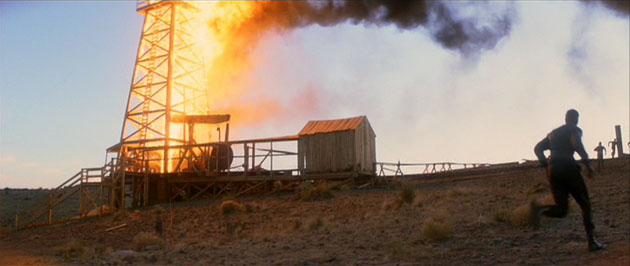Jack Fisk

We needed M1s and machine guns for our film and I found them in the United States. The U.S. Army had over 10,000 M-1’s in Kentucky. They had a program where they would give them to 16-year-old boys. If you were in the Boy Scouts you could write a letter to receive one. Well, I tried to get 500 of them and they wouldn’t give them to me. They don’t want any military films made unless they’re DOD-approved. They wouldn’t help us. I made a preliminary trip to Australia and made arrangements with an Australian armorer to get all the weapons we needed. I had about a month off before we really started prepping the film and I went back to the States. I would call him and I’d write him notes but he never wrote me back and I started getting a little worried. I got back over to Australia and I found out that in the two months I was gone there’d been a mass killing, somebody’d gone crazy. As a result, the Government had outlawed guns in Australia and they were buying them back and our armorer had sold all his guns for $500,000 to the Australian government.
We were there making a WWII picture and we had no weapons. So I started searching around and thinking of where weapons would be. The United States wouldn’t give them to us. Somebody told me about all the weapons we’d left in Viet Nam and I believed it because I had seen all the stuff that was left in Guadalcanal from WWII. So we contacted some armorers in Viet Nam and we ended up buying all our M1s and cannons and other American weaponry from Viet Nam. We couldn’t ship them directly into Australia, we had to ship them to Canada and then in Canada they had to fit them so they could only fire a certain blank. Then they shipped them to us in Australia. The rule was – we had to ship them out of Australia when we were finished. So it got real complicated. You know our job is solving problems. Sometimes designing sets is the easiest part of it!
AS: Is the ability to solve problems on your feet another requirement for production designers?
JF: Definitely. I think that’s what we do. No matter what is written in the script we’ve got to figure out how the company with their budget and resources can get it on film. Sometimes it’s building the sets and sometimes it’s greenscreens. Sometimes it’s making something else work. There’s never one set answer.
AS: The challenges are always different.
JF: I love shooting on location because you move into a little community and start working with them. To go to Guadalcanal and build a village with Solomon Islanders, there’s no way you could do that as a tourist. You get to know people so well. You’re eating with them, learning about their culture. I’d read studies of the cultural differences of the Solomon Islanders in advance so it was easier for me to work with them. Men don’t work, they’re warriors. They used to be headhunters. They look very fierce.
Pingback: K.K. Barrett
Pingback: Laurence Bennett
Pingback: Adam Stockhausen
Pingback: Colin Gibson